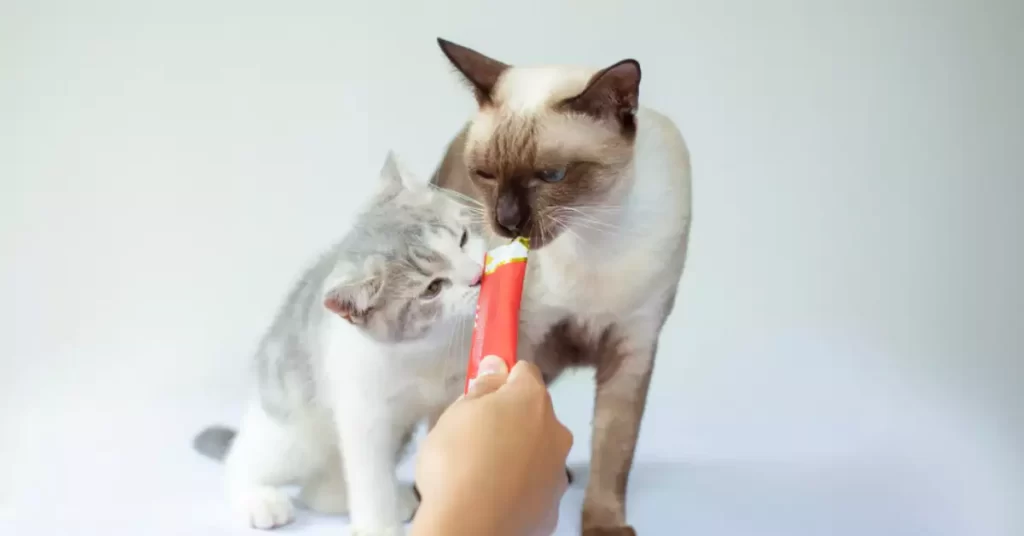Cats are curious creatures, and they often seem to have an affinity for human food. As cat owners, we may be tempted to share a tasty morsel with our feline friends, but is it always a good idea?
One common snack that cat owners might wonder about is fish sticks. This article will explore whether it’s safe for cats to eat fish sticks, the potential risks and benefits, and some alternatives to consider.
Can Cats Eat Fish Sticks?
Cats can eat fish sticks, but it’s not the ideal food for them. While fish is a good source of protein, the additional ingredients in fish sticks, such as breading, oil, and additives, may not be suitable for a cat’s digestive system.
It’s important to understand cats’ nutritional needs and what goes into fish sticks to make an informed decision about whether or not to share this treat with your feline companion.
Understanding Cats’ Nutritional Needs
Cats are obligate carnivores, meaning they require specific nutrients that can only be found in animal-based protein sources. Their dietary needs can be broken down into three main categories:
Protein
Cats require a high level of protein in their diet to support muscle growth, organ function, and overall health. Fish is a good source of protein, which is why it’s often included in commercial cat foods.
Fat
Cats also need fat in their diets to provide energy, support cell function, and promote healthy skin and coats.
Some fish, such as salmon and tuna, contain healthy omega-3 fatty acids, which can be beneficial for cats.
Carbohydrates
Unlike humans and dogs, cats have a limited ability to metabolize carbohydrates. As a result, their diet should be relatively low in carbs.
Ingredients in Fish Sticks
Fish
Fish sticks typically contain processed white fish, such as cod or pollock, which can provide protein and essential nutrients for cats.
Breading
The breading on fish sticks is high in carbohydrates, which can be difficult for cats to digest. Additionally, it may contain seasonings or spices that could upset your cat’s stomach.
Oil
Fish sticks are often deep-fried, which adds unhealthy fats and calories. Excessive fat intake can lead to weight gain and other health problems in cats.
Additives
Preservatives, artificial flavors, and colorings are commonly found in fish sticks. These ingredients can be harmful to cats, especially if consumed in large quantities.

Potential Risks and Health Concerns
Sodium Content
Fish sticks are often high in sodium, which can be harmful to cats. Excessive sodium intake can lead to dehydration, high blood pressure, and even kidney damage.
Preservatives and Artificial Ingredients
As mentioned earlier, fish sticks can contain additives that are not suitable for cats. These ingredients can cause gastrointestinal upset and other health issues.
Allergies
While fish allergies are relatively rare in cats, some may be sensitive to certain types of fish or ingredients found in fish sticks.
If your cat has never had fish before, monitor them closely for signs of an allergic reaction, such as itching, vomiting, or diarrhea.
Benefits of Fish Sticks for Cats
While fish sticks are not an ideal food for cats, they do offer some benefits. The fish used in fish sticks can provide a source of protein and essential nutrients, such as omega-3 fatty acids.
These nutrients can support your cat’s overall health, including its coat, skin, and immune system.
However, the risks and drawbacks of feeding fish sticks to cats often outweigh the potential benefits.
Alternatives to Fish Sticks for Cats
Homemade Fish Sticks
If you’re determined to offer your cat a fish stick-like treat, consider making homemade fish sticks using fresh fish, such as salmon or cod.
You can lightly coat the fish in a cat-safe breading, such as crushed rice cakes, and bake or air fry them.
This will provide your cat with the benefits of fish without the added sodium, unhealthy fats, and additives found in commercial fish sticks.
Fish-based Cat Treats
There are many fish-based cat treats available on the market that are specifically formulated to meet your cat’s nutritional needs.
These treats can provide the benefits of fish without the potential risks associated with fish sticks.
How to Safely Feed Your Cat Fish Sticks
If you decide to feed your cat a fish stick, follow these guidelines to minimize potential risks:
- Choose fish sticks with minimal additives, preservatives, and sodium.
- Remove the breading before offering it to your cat, as it is high in carbohydrates and may contain seasonings that can be harmful to cats.
- Offer fish sticks as an occasional treat, not a regular part of your cat’s diet.
- Monitor your cat closely for signs of an allergic reaction or gastrointestinal upset.
FAQs
Can cats eat fish sticks?
Cats can eat fish sticks, but they are not an ideal food for them due to their high carbohydrate content, unhealthy fats, and added sodium and preservatives.
Are fish sticks toxic to cats?
While fish sticks are not toxic to cats, they can pose health risks due to their high sodium content, additives, and unhealthy fats.
What are some alternatives to fish sticks for cats?
Homemade fish sticks and fish-based cat treats are healthier alternatives to commercial fish sticks for cats.
Conclusion
Although cats can eat fish sticks, it’s best to offer them a more suitable alternative. Fish sticks often contain unhealthy ingredients and are not nutritionally balanced for cats.
Instead, consider homemade fish sticks or fish-based cat treats to provide your cat with a healthier and more appropriate snack.
Remember to always prioritize your cat’s dietary needs and consult with your veterinarian if you have any concerns about their nutrition.